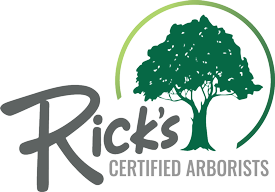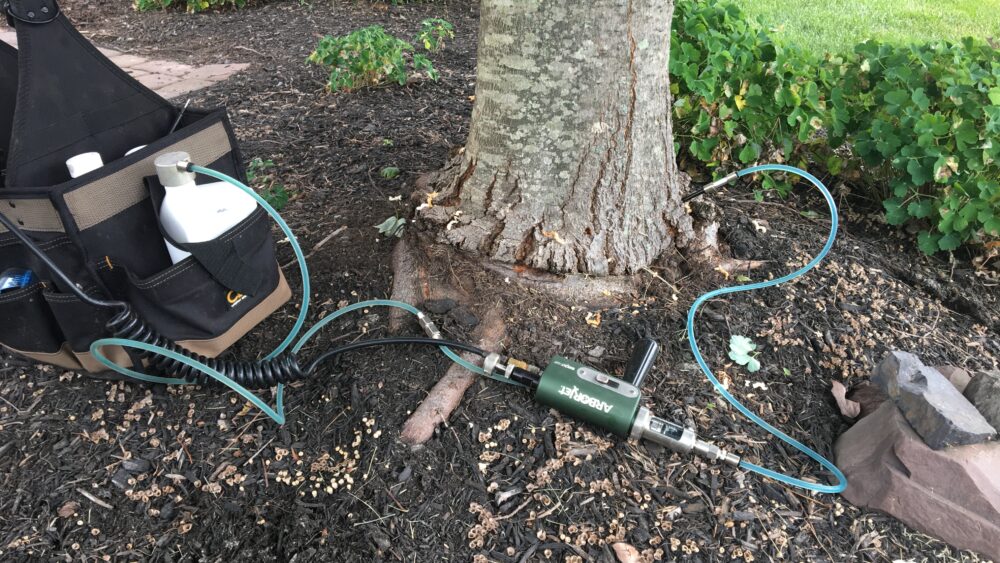Bagworms on trees can destroy trees and shrubs. When you see large areas of brown or yellow foliage, you may have a bagworm problem. Look closely for signs of bagworms so you can protect your trees from total devastation.
Rick’s PHC Certified Arborists uses soil injection to protect trees from the ground up without spraying harmful chemicals throughout the area.
Identifying Bagworms
Bagworms most often invade conifer trees such as spruce, juniper, or pine. They get their name from the baglike cocoons they form around themselves. If left untreated, bagworms quickly destroy nearby trees and bushes.
In the larvae stage, bagworms help themselves to trees and shrubs. When they finish feeding, they create “bags” around themselves by spinning silk threads with leaves and other organic matter.
Female bagworms remain inside their bags throughout their life cycle, producing up to 1,000 eggs before they die. As the eggs hatch, the cycle continues until nearby trees become completely infested with bagworms.
Because bagworms use parts of the tree to create their bags, they often go unnoticed as they infiltrate the area. When you know how to recognize the early signs, you can treat bagworms before they destroy the landscaping.
Each bagworm builds a bag about two inches long. The bags are brown and can look like small pine cones from a distance. While female bagworms remain inside the bags, male bagworms emerge to feast on surrounding trees.
Male bagworms look like small, black moths. They are hard to spot, never growing longer than one inch.
Treating Bagworms
Depending on the level of infestation, there are a few different ways to treat bagworms on trees.
Manual Extermination
If caught early, you can remove bagworms by hand. Carefully remove each bag and place it in a container with soap and water. This will kill the bagworm larvae.
Manual extermination is only effective before the bagworms hatch. This method is best employed in early spring, as bagworms typically hatch from late May to early June.
Chemical Treatment
When there are too many bagworms to remove by hand, the best course of action is to use chemical treatment. Chemicals work best when applied in late spring on newly hatched larvae. An insecticide sprayer will allow you to reach bagworms high into the trees.
Avian Extermination
A chemical-free way to control bagworms is by introducing sparrows to the area. To invite sparrows to remain on your property, create shelters, areas for dust baths, and ground-level birdbaths. As they enjoy the habitat you created for them, they protect the trees by feasting on bagworms.
Professional Tree Service
The best way to maintain healthy trees is by hiring a professional. There are many reasons why hiring a certified arborist is a must, and exterminating bagworms on trees is just one of them.
Rick’s PHC Certified Arborists in West Chester, PA, will inspect your trees for bagworms or disease and safely restore the health of your landscape. Call 610-840-2655 to request a quote from our certified arborists.


Comments are closed.